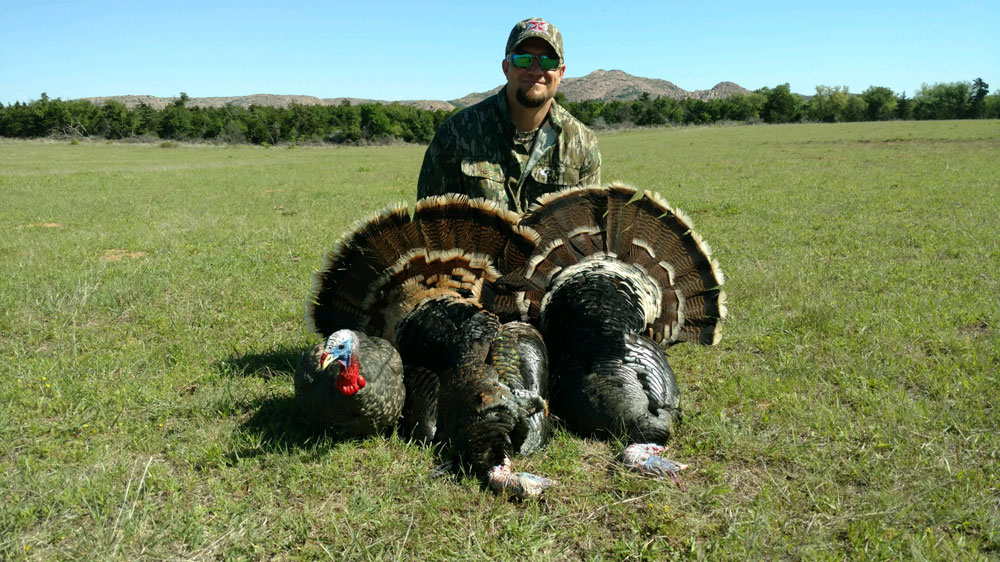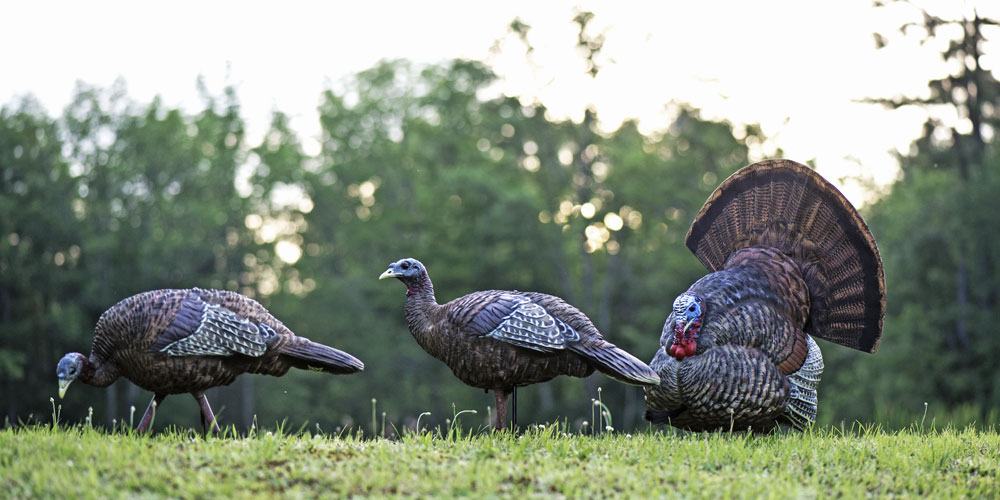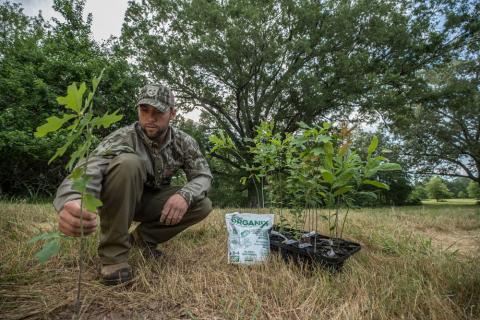Shane Smith

I would wager that just about everyone that has pursued turkeys for any length of time can tell you a story or two of a big field turkey getting the best of them. We know, sooner or later, he will be in this field with a full fan out, wings dragging and looking for love. However, he seems to be a much harder bird to kill than others you pursue in the woods. Why is this?
Is it because he can see farther in the field? Feels safer from predators? Can be seen further by hens? Display his dominance?
I really think it is a culmination of all of the above. But I want to go over a few different tactics you can employ to try and wrap a tag around that bird’s leg this spring.
Find the Bottlenecks. These birds may roost on the field edges alright, but will leave for short periods of time throughout the day. Turkeys are a lot like us and will seek out the path of least resistance. Funnels and bottlenecks are prime areas to put the odds in your favor for catching a field bird entering or exiting the field.
Don’t Be Late! When you have done your homework and put a bird to bed the evening before, don’t talk shop at the local café and risk getting to the field a bit too late and spooking the bird. If I know I am setting up on a bird that is roosted on a field, I will try to get there and set up in the dark. You have got to think from the gobbler’s position high in the tree, he can see and hear a long ways out especially the closer it gets to daylight.
De-Phone. Yes, silence your phone when you get out of the truck and don’t dare get it back out until well after daylight. When it is still fairly dark and daybreak is right around the corner, don’t be checking Facebook, the score from the game last night or anything. I will also throw in there to not use a flashlight either. That light can be seen a long ways out and the last thing we need to do is let that big boy know something is wrong before fly down.
Gobble Back. When I am set up on a field bird situation, this is one of the times I really like to use a gobble tube. When I hear a bird gobble on the limb, I will opt to give them a gobble back. I am not necessarily trying to lure him in at this point, but rather let him know there is some competition around the corner. If your bird flies down and is strutting in the field with a flock of hens, I will hit my gobble tube to peak his interest or even try to drag a few of his girls my way.
Decoys. When I KNOW I am chasing a field bird, I will usually opt for 3-4 Avian-X decoys. My typical field set up will include, a full Strutter, 2 Hens and a ¼ Strut Jake if I can squeeze it in. Turkey decoys are not heavy, but rather cumbersome. I have found it is far easier to use a mesh material duck decoy bag than to try and stuff them in my turkey vest. Try and place your dekes where they can be seen from a variety of angles and not on the backside of a hill or knoll.

Calling. When it comes to calling a bird in a field, it is purely situational in my opinion. Don’t get stuck in a rut and hit the same cadence and same calls day in and day out. I like to use a mixture of higher pitch friction calls and more raspy diaphragm calls to give the illusion of multiple hens on the ground. My favorite calls are a Zink Power Hen Aluminum friction call and a Matt Morrett triple reed diaphragm call. I feel as though these give me a great blend of sounds and give me options as the situation dictates it.
Yes, some of this may sound or seem a bit odd. Turkey hunting is not like a chess game with rules and defined boundaries. Sometimes you have to lose your tunnel vision and think outside the box call to get that set of limb hanger spurs this season. I can tell you these small tricks have helped me to give a dirt nap to quite a few toms that had outsmarted me using traditional tactics.






























